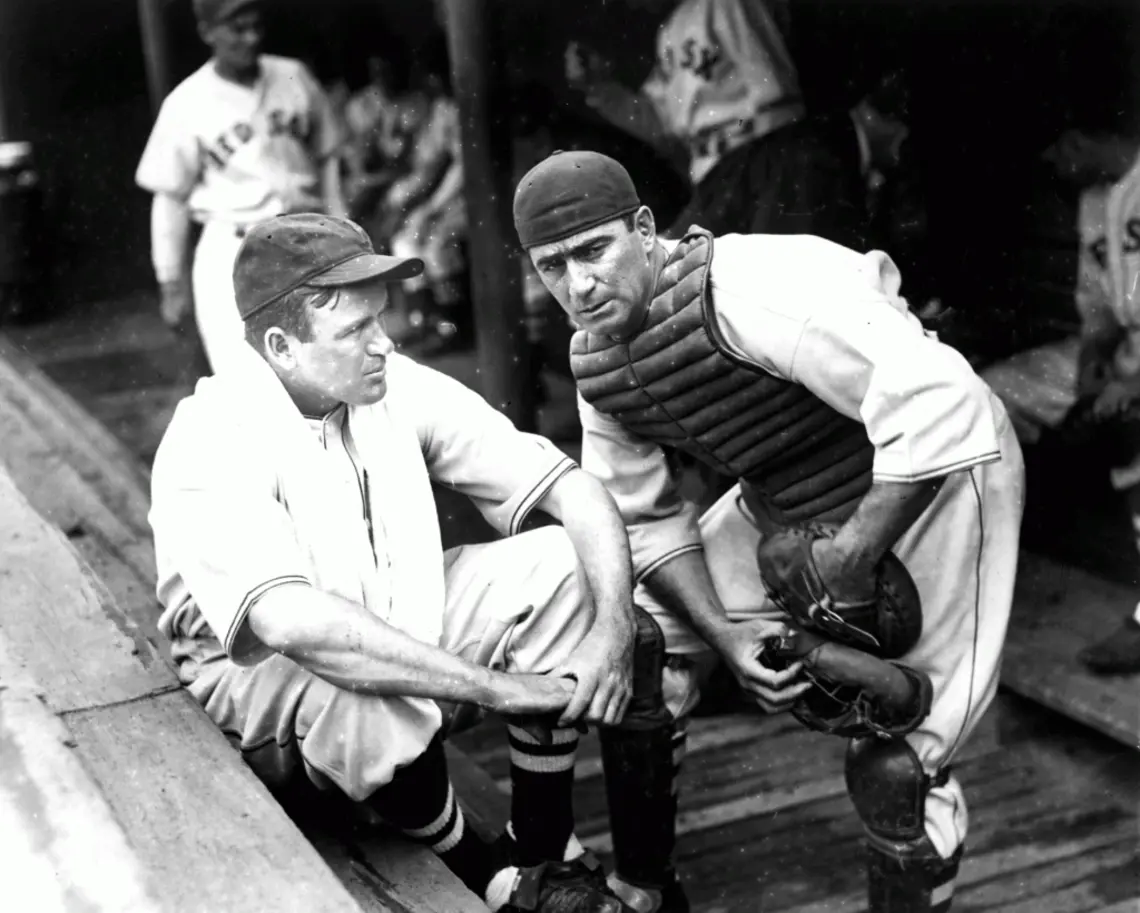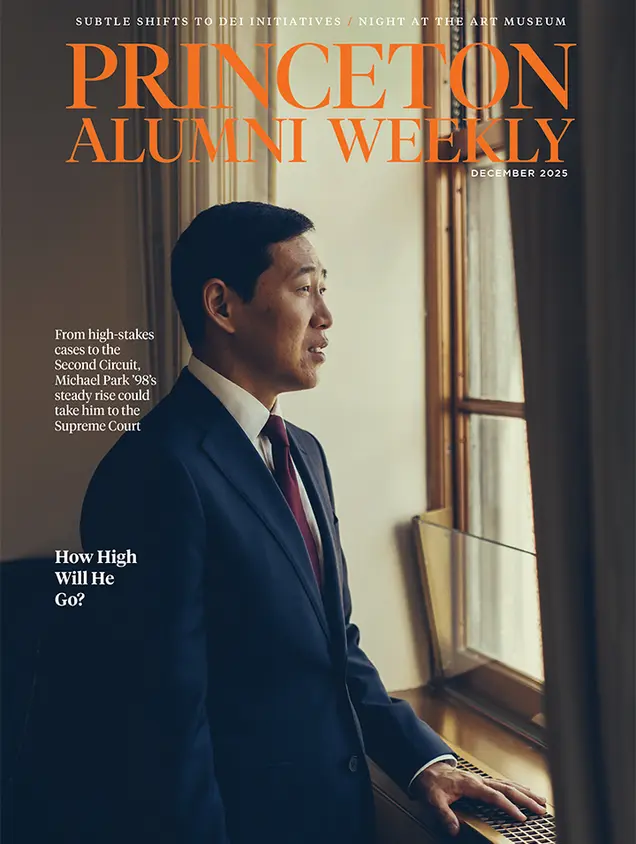
In this edition of the podcast, we talk about a cynical student protest by “future veterans” in 1936, whether or not Aaron Burr Jr. 1772’s reputation is worth rehabilitating, and three alumni with historical footnotes attached to their names — Alexander Benson 1894, Moe Berg ’23, and Harrison Goldin ’57.
The Rally ’Round the Cannon podcast is also available on iTunes — click here to subscribe
TRANSCRIPT:
BT: I’m Brett Tomlinson, the digital editor of the Princeton Alumni Weekly.
GL: And I’m Gregg Lange of the Great Class of 1970, who should know better.
BT: And this is the Rally ’Round the Cannon podcast. In this podcast, we talk about Princeton history and traditions. Gregg, the “That Was Then” column in our new issue, the Oct. 21 issue, features the story of the 1921 Intercollegiate Conference on the Limitation of Armaments at Princeton, which was at Princeton. It was a student-led conference that sort of reflected the idealism of students in the aftermath of World War I. And I know from speaking with you that that called to mind another episode of activism 15 years later, when student attitudes were quite different. So, can you tell us a little bit about that second example?
GL: Well I think the main thing is that I think everybody’s attitudes were a bit different by then. The League of Nations, since the United States blundered and didn’t get involved, after Wilson became incapacitated, sort of wound down and never became particularly effective in doing what it needed to do. The Depression intruded on everybody. Meanwhile in Europe, the odious reparations for the first World War just created more animosity. By 1936, you were not only in the middle of a worldwide depression, but Japan and Italy were already fighting imperial wars on their own. Everyone on the planet knew that Germany was simply biding its time and preparing to go back in. Hitler had been in power for three years. And the attitude worldwide was varied from utterly desperate all the way down to cynical, and that was about the best there was.
Meanwhile the U.S. Congress had effectively reneged on reparations to soldiers, veterans of World War I. At the point when the veterans marched on Washington, demonstrating for Congress to finally fund these after-the-fact payments for World War I veterans — which in the middle of the Depression was certainly a valid argument — immediately after that, some of the lighter-hearted folks at Princeton, although with quite an edge to their angle, came up with the Veterans of Future Wars, which I’ve mentioned briefly in a couple columns in the past.
The Veterans of Future Wars were based on the idea that since everybody in college now was pretty much certain to serve in the military and get shot at in the foreseeable future, they felt they deserved payments, as the World War I veterans did, and that they would much prefer to have them now while they were still alive to spend them.
This really struck a nerve. It was basically a local gag, when it started, gathered momentum, was picked up by newspapers, and went nationwide. There were way over 500 chapters of the Veterans of Future Wars by the time folks in both house of Congress stood up and railed against these spoiled kids who were trying to denigrate veterans and blah, blah, blah, blah, blah. Whereas I think in the cold light of day, especially with some remove later on, we can figure that maybe they were making a point. And the point, while it was similar to the anti-arms conference in 1921, was being made in a much more desperate and of course on the surface cynical way.
So the Veterans of Future Wars is something you should check up on and have a good time looking at.
BT: Also in the Oct. 21 issue we have a letter from John B. Moses ’42, proposing a Committee for the Rehabilitation of Aaron Burr Jr. 1772, one of Princeton’s most famous and most infamous alums. Are you on board with this idea? Is Aaron Burr worth another look?
GL: I think it captures all you need to know by saying, “Yes and no.”
The interesting things about Aaron Burr go on, and on, and on until they fall off the page. Yet in his own time, he was extremely reticent about saying much of anything in his own defense. He felt that people should necessarily accept him for the brilliant politician and/or raconteur that he was. Really complicated character who had many good ideas, got himself continually in trouble, may or may not have attempted treason against the U.S. government — it depends, really, what your definition of treason is, which is one reason I say yes and no — and certainly, as a punch line, has gotten much worse historically than he should have, given a number of interesting things that he’s done.
I keep telling people, and it’s a simplistic solution, but you could go read Gore Vidal’s Burr, which is a magnificent book. There are flights of fancy in it, literary conceits and many other things, but there’s a huge amount of research involved as well. As well as the more scholarly works that are mentioned in the Alumni Weekly.
A fascinating, fascinating man. I sometimes call him a cross between Richard Nixon and Anthony DiNozzo Sr., the part played by Robert Wagner on NCIS, who drives everyone nuts but always seems to add something to the party.
BT: Well, Aaron Burr certainly was a person who made history. There are other alumni who are sort of footnotes in history, and there’s one mentioned in another letter in this issue: Alexander Benson, Class of 1894. He was in the diplomatic service in a handful of countries in his career – Bolivia, Venezuela, Mexico, Brazil — and during his time in Bolivia, he was involved in the attempt to identify two American outlaws who had been killed in that country. They turned out to be Butch Cassidy and the Sundance Kid.
There are many stories of alumni in history who kind of had this footnote role, or who were witnesses to history. Gregg, do you have a favorite example of this?
GL: The time of year moves me to mention our dear friend Moe Berg of the Class of 1923, who 82 years ago was sitting on the bench comfortably during the World Series with the Washington Senators. One reason this is so fascinating is he is the only Princetonian, of the 26 who have been in the Major Leagues over the decades, the only Princetonian ever to make it to the World Series. And the Senators, as you can well expect, lost, so he did not get a World Series ring.
It’s probably the only major sports championship on the planet that a Princetonian hasn’t won. I mean, there are two Super Bowl-winning quarterbacks, NHL Stanley Cup champions, NBA champions, ABA championships for you old timers, Olympic gold medals out the wazoo, MLS championships, Major Lacrosse League championships — no one’s ever gotten a World Series ring from Princeton.
We have three guys alive this year — Ross Ohlendorf ’05, Will Venable ’05, and Chris Young ’02 — and as of this recording they’re all still alive, and we’ll see who makes it through the American League Championship Series and maybe there’ll be a Princetonian back in the World Series this year for the first time in 82 years.
BT: My favorite is Harrison Goldin, Class of 1957, who was a young justice department lawyer in 1962 when the attorney general, Robert Kennedy, summoned him to his office and told him his next assignment: He was to travel to the University of Mississippi and be the roommate of James Meredith, the first black student at Ole Miss.
Goldin later served in the New York State Senate and even ran for mayor of New York City, but the Meredith experience was a memorable one for him. He wrote about it for PAW, 40 years later.
GL: And it’s a whole series of fascinating Princeton stories involved in that era, many of them featuring Nicholas Katzenbach ’43 and John Doar ’44. Any of the listeners who are unfamiliar with those should read up on them because that’s a very inspiring and important time for all concerned, very moving, even in retrospect.
BT: Absolutely. Well Gregg, we’ve come to the part where I like to give you a chance to give our listeners a quick preview of your column for PAW Online. What were you writing about this time around?
GL: Well, I would say it’s about accurate handling of digital metadata, but that’s probably not the way to go about it on a PR basis, so let’s try the other end. What got me started on this is that Toni Morrison’s papers are involved now in the archives at Princeton, who will be holding them for her — a great honor for the University to be sure.
Some of them, because of various difficulties along the way including her house fire about 20 years ago, exist only in digital copies at the moment. Some of them are on old five-inch disks that are obsolete by definition. They’re not impossible to read but the university actually required some outside technical help both in interpreting the information on the disks and also to avoid corrupting the information about the information on the disk, the metadata.
There are a whole series of issues involved in all sorts of digital archiving now —everything from scanning paper and visual records to handling the zeroes and ones that result from it. We’re talking about all of that and how to give yourself a big headache running an archive in the 21st century.
Paw in print

December 2025
Judge Michael Park ’98; shifts in DEI initiatives; a night at the new art museum.

No responses yet